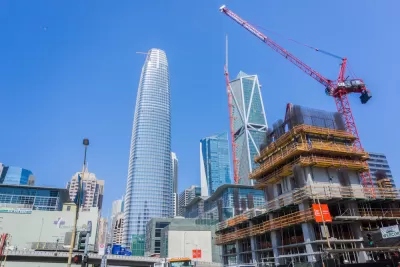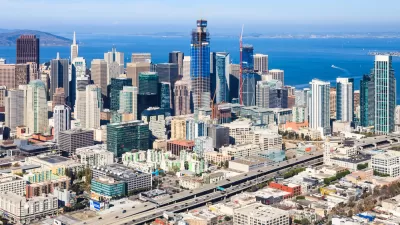A new fee would add an estimated 6 percent to the cost of building new office space in San Francisco, yet not many from the business community resisted the new costs.

"[I]n San Francisco, which has seen jobs grow 38% since 2010, legislation to double a fee on office development over the next few years breezed through the legislative process, winning unanimous support on Tuesday from the Board of Supervisors," reports J.K. Dineen.
"The increase in the one-time fees creates an additional $170 million for affordable housing, for a total of $385 million over the next five to seven years," according to Dineen.
The legislation didn't meet much resistance, despite predictions by City Economist Ted Egan that the fee would cost the city in job creation capacity, because of the intense need for affordable housing in the city.
FULL STORY: New SF fee on office buildings to pay for affordable housing sails through

Trump Administration Could Effectively End Housing Voucher Program
Federal officials are eyeing major cuts to the Section 8 program that helps millions of low-income households pay rent.

Planetizen Federal Action Tracker
A weekly monitor of how Trump’s orders and actions are impacting planners and planning in America.

The 120 Year Old Tiny Home Villages That Sheltered San Francisco’s Earthquake Refugees
More than a century ago, San Francisco mobilized to house thousands of residents displaced by the 1906 earthquake. Could their strategy offer a model for the present?

Alabama School Forestry Initiative Brings Trees to Schoolyards
Trees can improve physical and mental health for students and commnity members.

NYC Outdoor Dining Could Get a Re-Do
The city council is considering making the al fresco dining program year-round to address cost concerns from small businesses.

HSR Reaches Key Settlement in Northern California City
The state’s high-speed rail authority reached an agreement with Millbrae, a key city on the train’s proposed route to San Francisco.
Urban Design for Planners 1: Software Tools
This six-course series explores essential urban design concepts using open source software and equips planners with the tools they need to participate fully in the urban design process.
Planning for Universal Design
Learn the tools for implementing Universal Design in planning regulations.
Ada County Highway District
Clanton & Associates, Inc.
Jessamine County Fiscal Court
Institute for Housing and Urban Development Studies (IHS)
City of Grandview
Harvard GSD Executive Education
Toledo-Lucas County Plan Commissions
Salt Lake City
NYU Wagner Graduate School of Public Service





























